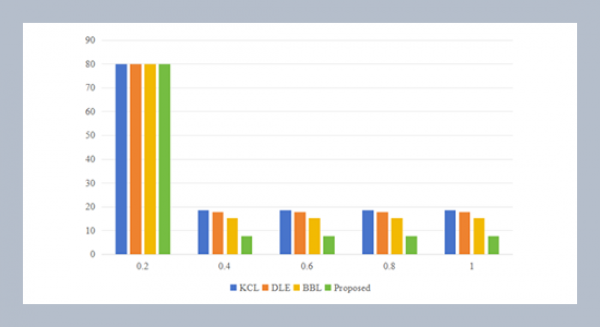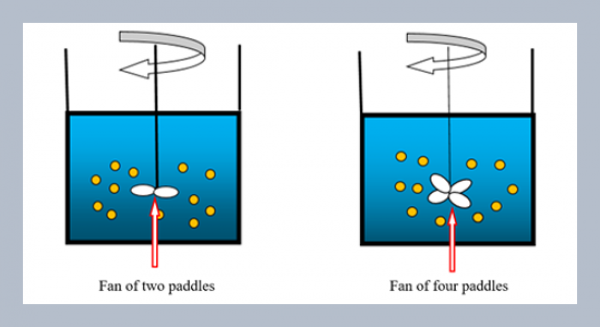REFERENCES
- Alnagar, D.K.F. 2020. Using artificial neural network to predicted student satisfaction in e-learning. American Journal of Applied Mathematics and Statistics, 8, 90–95.
- Amkor, A., Aboulkacem, A., El Bannay, O. El Barbri, N. 2024. Electronic tool coupled with machine learning algorithms for the detection of deltamethrin residues in Mentha Spicata L. International Journal of Applied Science and Engineering, 21(1), 2023265.
- Anderson, R.E., Srinivasan, S.S. 2003. E‐satisfaction and e‐loyalty: A contingency framework. Psychology & Marketing, 20, 123–138.
- Baber, H. 2020. Determinants of students’ perceived learning outcome and satisfaction in online learning during the pandemic of COVID-19. Journal of Education and E-learning Research, 7, 285–292.
- Bervell, B., Umar, I.N. 2020. Blended learning or face-to-face? Does Tutor anxiety prevent the adoption of Learning Management Systems for distance education in Ghana?. Open Learning: The Journal of Open, Distance and E-learning, 35, 159–177.
- Bossman, A., Agyei, S.K. 2022. Technology and instructor dimensions, e-learning satisfaction, and academic performance of distance students in Ghana. Heliyon, 8.
- Browne, M.W. 2000. Cross-validation methods. Journal of Mathematical Psychology, 44, 108–132.
- Chang, J.-R., Chen, L.-S., Chang, C.-W. 2020. New term weighting methods for classifying textual sentiment data. International Journal of Applied Science and Engineering, 17(3), 257–268.
- Chen, L.-S., Su, C.-T. 2008. Using granular computing model to induce scheduling knowledge in dynamic manufacturing environments. International Journal of Computer Integrated Manufacturing, 21(5), 569–583.
- Chen, W.-K., Chen, L.-S., Pan, Y.-T. 2021. A text mining-based framework to discover the important factors in text reviews for predicting the views of live streaming. Applied Soft Computing, 111, 107704.
- De Melo Pereira, F.A., Ramos, A.S.M., Gouvêa, M.A., da Costa, M.F. 2015. Satisfaction and continuous use intention of e-learning service in Brazilian public organizations. Computers in Human Behavior, 46, 139–148.
- Douglas, J.A., Douglas, A., McClelland, R.J., Davies, J. 2015. Understanding student satisfaction and dissatisfaction: An interpretive study in the UK higher education context. Studies in Higher Education, 40, 329–349.
- Elliot, K.M. 2003. Key determinants of student satisfaction. Journal of College Student Retention: Research, Theory and Practice, 4, 271–279.
- Fu, F.L. 2010. Comparison of students’ satisfaction and dissatisfaction factors in different classroom types in higher education. International Conference on Hybrid Learning, 415–426.
- Ho, I.M.K., Cheong, K.Y., Weldon, A. 2021. Predicting student satisfaction of emergency remote learning in higher education during COVID-19 using machine learning techniques. PLOS ONE, 16, e0249423.
- Hong, K.S. 2002. Relationships between students’ and instructional variables with satisfaction and learning from a Web-based course. Internet and Higher Education, 5, 267–281.
- Huynh-Cam, T.-T., Chen, L.-S., Le, H., 2021. Using decision trees and random forest algorithms to predict and determine factors contributing to first-year university students’ learning performance, Algorithms, 14(11), 318.
- Huynh-Cam, T.T., Chen, L.S., Ho, V.T. Lu, T.C. 2023. Identifying crucial factors for e-students’ satisfaction in Vietnamese emergency remote learning using machine learning methods. In 2023 12th International Conference on Awareness Science and Technology (iCAST), 16–21.
- Jameel, A.S., Hamdi, S.S., Karem, M.A., Raewf, M.B. 2021. E-satisfaction based on E-service quality among university students. Journal of Physics: Conference Series, 1804, 012039.
- Johnson, J.B., Reddy, P., Chand, R., Naiker, M. 2021. Attitudes and awareness of regional Pacific Island students towards e-learning. International Journal of Educational Technology in Higher Education, 18, 1–20.
- Jon-Chao, H., Chan-Jer, H., Chien-Yun, D., Ming-Yueh, H., Pei-Hsin, L., Lee, C.C. 2012. Technology anxiety and implicit learning ability affect technology leadership to promote the use of information technology at elementary schools. Procedia-Social and Behavioral Sciences, 64, 555–563.
- Kumar, N., Yadav, S.C. 2023. Comprehensive analysis of deep learning-based text classification models and applications. International Journal of Applied Science and Engineering, 20(3), 2022342.
- Lu, D.N., Le, H.Q., Vu, T.H., 2020. The factors affecting acceptance of e-learning: A machine learning algorithm approach. Education Sciences, 10, 270.
- Martín Rodríguez, Ó., González-Gómez, F., Guardiola, J. 2019. Do course evaluation systems have an influence on e-learning student satisfaction? Higher Education Evaluation and Development, 13, 18–32.
- Masadeh, R.E., Almajali, D., Alrowwad, A.A., Alkhawaldeh, R., Khwaldeh, S., Obeid, B., 2023. Evaluation of factors affecting university students' satisfaction with e-learning systems used during Covid-19 crisis: A field study in Jordanian higher education institutions. International Journal of Data and Network Science, 7, 199–214.
- Muljana, P.S., Luo, T., 2019. Factors contributing to student retention in online learning and recommended strategies for improvement: A systematic literature review. Journal of Information Technology Education: Research, 18, 19–57.
- Nevill, A., Rhodes, C. 2004. Academic and social integration in higher education: a survey of satisfaction and dissatisfaction within a first‐year education studies cohort at a new university. Journal of Further and Higher Education, 28, 179–193.
- Pérez-Pérez, M., Serrano-Bedia, A.M., García-Piqueres, G. 2020. An analysis of factors affecting students’ perceptions of learning outcomes with Moodle. Journal of Further and Higher Education, 44, 1114–1129.
- Pham, L., Limbu, Y.B., Bui, T.K., Nguyen, H.T., Pham, H.T. 2019. Does e-learning service quality influence e-learning student satisfaction and loyalty? Evidence from Vietnam. International Journal of Educational Technology in Higher Education, 16, 1–26.
- Pham, P.T., Duong, T.B., Phan, T.T.T., Nguyen, T.H., Nguyen, M.T., Tuyet, T.L.T., Hoang, N.D., Yen, D.H., Nguyen, T.T. 2020. Managing continuing education via distance learning and face-to-face courses for human resource development in the Mekong Delta of Vietnam. International Journal of Learning, Teaching and Educational Research, 19, 150–171.
- Puška, A., Puška, E., Dragić, L., Maksimović, A., Osmanović, N. 2021. Students’ satisfaction with e-learning platforms in Bosnia and Herzegovina. Technology, Knowledge and Learning, 26, 173–191.
- Sandiwarno, S., Niu, Z., Nyamawe, A.S. 2023. A novel hybrid machine learning model for analyzing e-learning users’ satisfaction. International Journal of Human-Computer Interaction, 1–22.
- Schulz, M., 2023. E-learning as a development Tool. Sustainability, 15, 15012.
Skrbinjek, V., Dermol, V., 2019. Predicting students’ satisfaction using a decision tree. Tertiary Education and Management, 25, 101–113.
- Sung, P.C. 2022. Efficacy of real-time audio biofeedback on physiological strains for simulated tasks with medium and heavy loads. International Journal of Applied Science and Engineering, 19(4), 2022308.
- Ullah, M.A., Alam, M.M., Mahiuddin, M., Rahman, M.M. 2019. Predicting factors of students dissatisfaction for retention. Emerging Technologies in Data Mining and Information Security, Springer, Singapore.
- Violante, M.G., Vezzetti, E. 2015. Virtual interactive e‐learning application: An evaluation of the student satisfaction. Computer Applications in Engineering Education, 23, 72–91.
- Wang, X, Hassan, A.B., Pyng, H.S., Ye, H. 2023. Development and empirical study of international student satisfaction model of online course learning interaction in Chinese universities. Education and Information Technologies, 28, 16951–16977.
- Yang, Z., Becerik-Gerber, B., Mino, L. 2013. A study on student perceptions of higher education classrooms: Impact of classroom attributes on student satisfaction and performance. Building and Environment, 70, 171–188.
- Yoke, L.B. 2018. Interrelationship between perceived instructor power, student dissatisfaction, and complaint behaviors in the context of higher education. International Education Studies, 11, 12–25.















